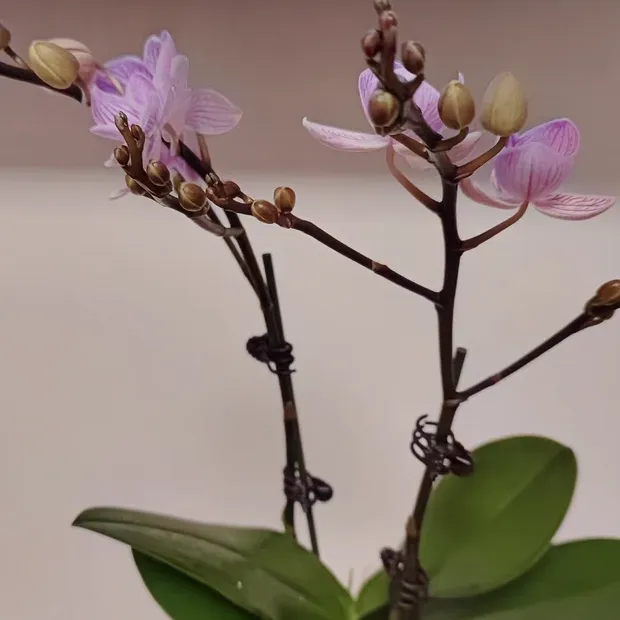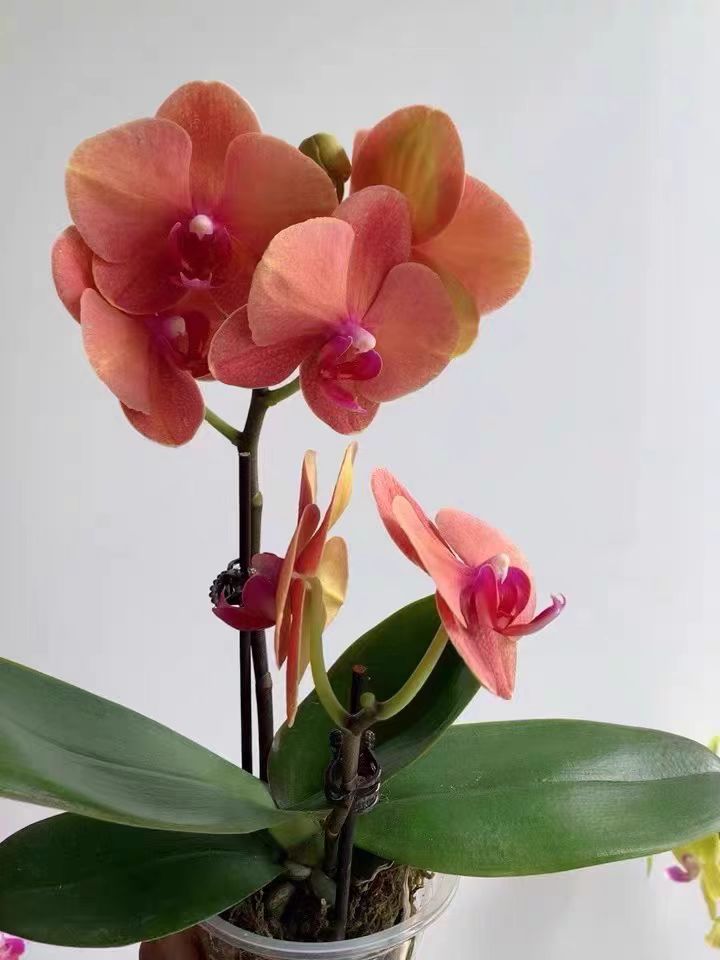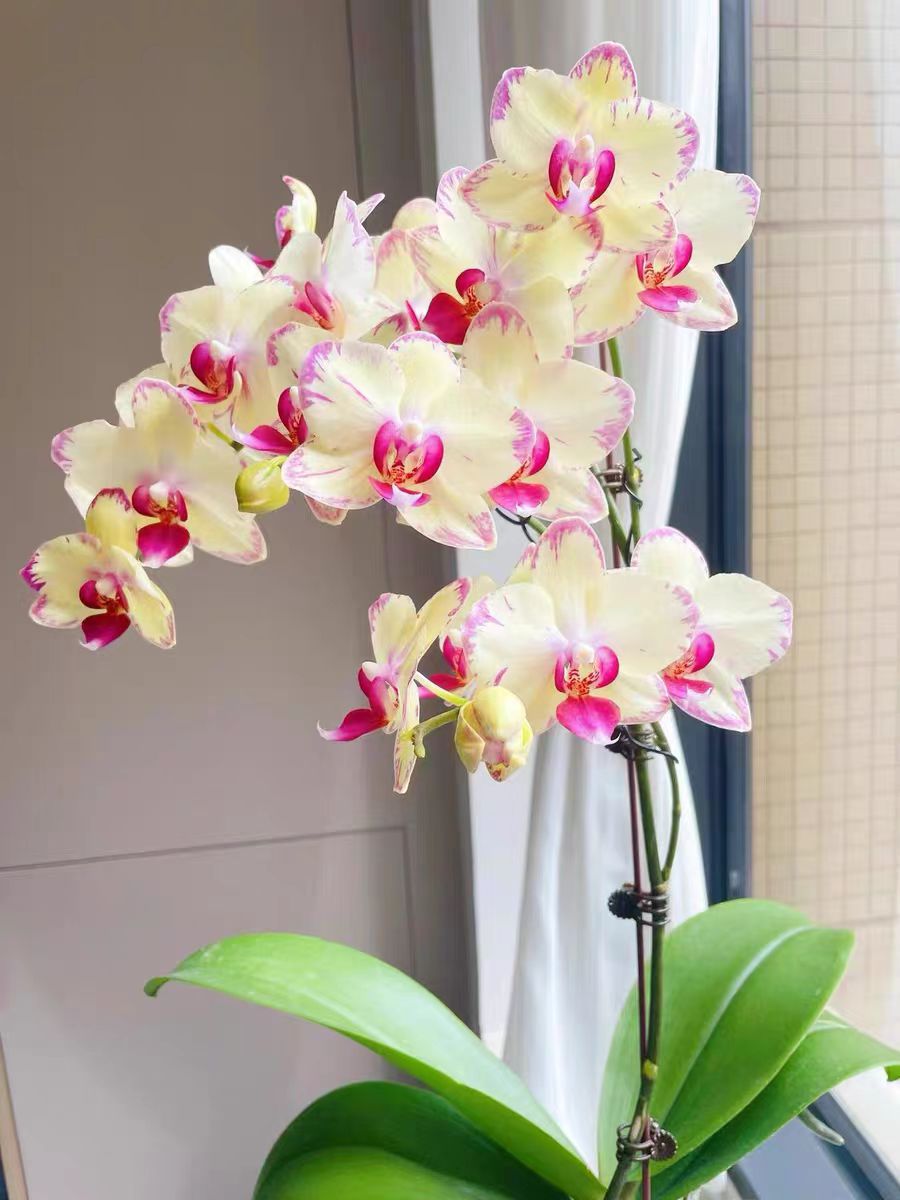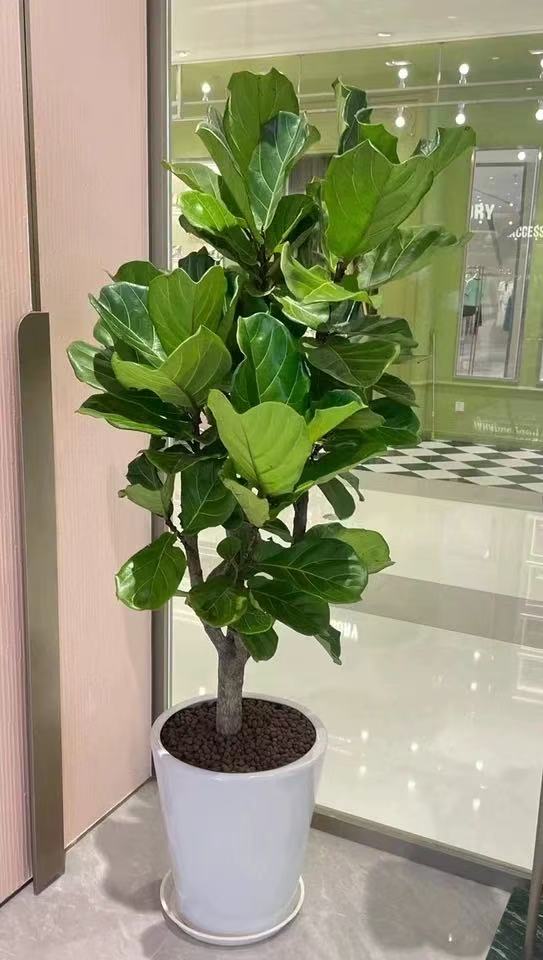The Phalaenopsis with pink veins and a large lip belongs to the medium-sized flower type. Its flower diameter is approximately 7 centimeters, and the height of the flower stem reaches about 30 centimeters. Its three sepals and two lateral petals all have a pure white background, covered with clearly visible light pink-purple veins. Its lip is trilobed and appears wider compared to common Phalaenopsis varieties. It is white in color and decorated with pink-purple stripes. The anther part is white, while the pollen mass and its surrounding areas are yellow, dotted with small purple dots.
During the maintenance process, if the petals lose vitality and become wilted, there may be various reasons. Improper water management is one of them. Whether it is due to a lack of water causing cells to be dehydrated or excessive water making the roots' respiration blocked and energy supply insufficient, this problem may be triggered. In addition, intense light is also the culprit for the damage to petals and leaves. Especially in the hot summer days, extra caution is needed. Unsuitable temperatures can also cause trouble for Phalaenopsis. High temperatures will accelerate the evaporation of water, while low temperatures will inhibit its growth and even lead to frostbite.
In response to the problem of wilted petals, corresponding measures should be taken according to specific situations. If it is caused by a lack of water, pot soaking or watering slowly along the edge of the pot should be carried out in a timely manner, and the principle of "watering when the soil is dry and stopping when it is wet" should be followed. Judge the watering timing by inserting your finger 2 - 3 centimeters into the soil. If there is too much watering, stop watering immediately and move the plant to a well-ventilated place. If the roots have already rotted, the rotten roots need to be cut off, disinfected, and then replanted in breathable planting materials.
For the situation of excessive light intensity, the plant can be moved to a place with sufficient diffused light or use a sunshade net for shading. When the temperature is not suitable, in a high-temperature environment, methods such as spraying water and increasing ventilation can be used to lower the temperature. While in a low-temperature environment, the plant needs to be moved to a warm place and the temperature should be kept between 15 - 28 °C. In winter, it is necessary to ensure that the temperature is not lower than 10 °C.
In winter maintenance, we need to pay special attention to the following points: Firstly, make sure that the temperature remains above 10 °C. The plant can be placed in a heated room indoors, but keep it away from heat sources. A heating pad can also be used to provide a suitable temperature. Secondly, in terms of light, it should be placed on a south-facing windowsill to allow the plant to fully receive sunlight, while paying attention to preventing cold damage caused by excessive temperature differences.
For watering, it can be done once every 10 - 15 days. Choose noon on a sunny day to do it, and the water temperature should be close to the room temperature. Follow the principle of "better dry than wet" and judge whether watering is needed by touching the planting materials. Regarding fertilization, generally, fertilization is not required in winter. If there is a real need, a thin phosphorus-potassium fertilizer can be applied once every 2 - 3 months, but be careful to avoid getting the fertilizer on the flowers and leaves. Finally, to increase the air humidity, a humidifier can be used or water blocks can be placed in a water basin to increase humidity, while paying attention to preventing the breeding of germs.
How to Take Care of Phalaenopsis with Pink Veins and a Large Lip in Winter?

Share with
Tagged in :




Leave a Reply